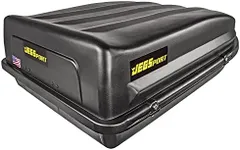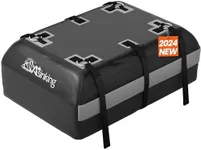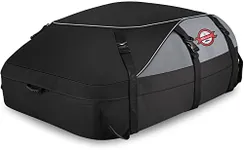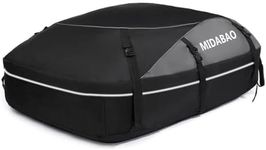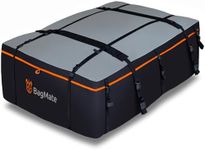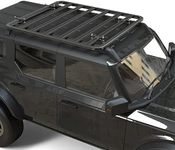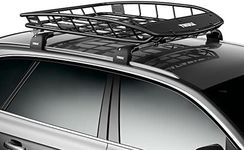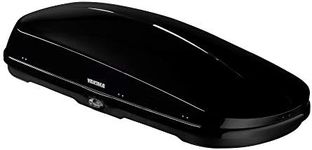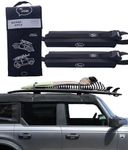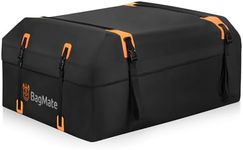Buying Guide for the Best Car Roof Carrier
Choosing the right car roof carrier can make a significant difference in your travel experience, whether you're going on a road trip, camping, or simply need extra storage space. The key is to find a carrier that fits your vehicle, meets your storage needs, and is easy to use. Here are some important specifications to consider when selecting a car roof carrier.CapacityCapacity refers to the amount of storage space the roof carrier provides, usually measured in cubic feet or liters. This is important because it determines how much gear you can carry. Smaller carriers (10-15 cubic feet) are suitable for light packing or small cars, medium carriers (16-20 cubic feet) are good for families or moderate packing, and large carriers (21+ cubic feet) are ideal for long trips or large families. Choose a capacity based on the amount of luggage or equipment you typically need to transport.
DimensionsThe dimensions of a roof carrier include its length, width, and height. These measurements are crucial to ensure the carrier fits your vehicle and doesn't obstruct your view or interfere with your car's aerodynamics. Smaller cars may require more compact carriers, while larger vehicles can accommodate bigger ones. Measure your car's roof and compare it with the carrier's dimensions to ensure a proper fit.
Weight LimitThe weight limit is the maximum amount of weight the roof carrier can safely hold. This is important to prevent overloading, which can affect your car's handling and safety. Light-duty carriers typically support up to 100 pounds, medium-duty carriers up to 150 pounds, and heavy-duty carriers up to 200 pounds or more. Consider the weight of the items you plan to carry and choose a carrier that can handle that load.
MaterialRoof carriers are made from various materials, including hard-shell plastic, soft-shell fabric, and metal. Hard-shell carriers are durable, weather-resistant, and secure, making them ideal for long-term use and protection against the elements. Soft-shell carriers are lightweight, flexible, and easier to store when not in use, but may not offer the same level of protection. Metal carriers are strong and can handle heavy loads but may be prone to rust. Choose a material based on your durability needs and storage preferences.
Mounting SystemThe mounting system refers to how the roof carrier attaches to your vehicle. Common systems include roof racks, crossbars, and factory-installed rails. It's important because a secure mounting system ensures the carrier stays in place during travel. Some carriers come with universal mounting systems that fit most vehicles, while others require specific racks or bars. Check your vehicle's roof setup and choose a carrier with a compatible mounting system.
AerodynamicsAerodynamics refers to how the shape of the roof carrier affects air flow around your vehicle. This is important because a more aerodynamic design can reduce wind resistance, improve fuel efficiency, and minimize noise. Low-profile carriers are more aerodynamic and suitable for long-distance travel, while taller carriers may offer more space but can create more drag. Consider your typical driving conditions and prioritize aerodynamics if you frequently drive at high speeds.
Security FeaturesSecurity features include locks and latches that keep your belongings safe and prevent theft. This is important for peace of mind, especially when leaving your vehicle unattended. Some carriers come with built-in locks, while others may require additional padlocks. Choose a carrier with reliable security features if you plan to store valuable items or park in public areas.
Ease of UseEase of use refers to how simple it is to install, load, and unload the roof carrier. This is important for convenience and efficiency. Look for carriers with user-friendly designs, such as quick-release mounting systems, wide openings, and easy-to-operate latches. If you frequently need to access your gear, prioritize a carrier that offers easy access and straightforward installation.
